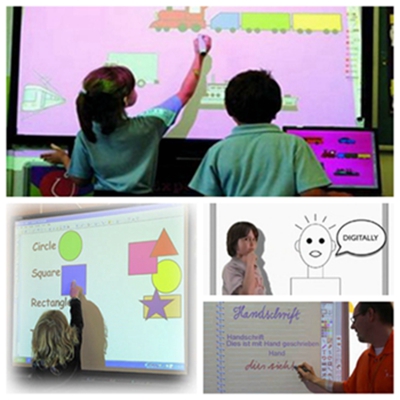The interactive whiteboard was implemented in most
learning institutions during the 90’s as a welcome replacement to the
chalkboard. Since then, the interactive whiteboard has impacted learning in
many positive ways, chiefly by enabling an interactive environment where
students can learn better. The interactive boards have been improving and
evolving over for over twenty years, with many boards technologically advanced
than older models in the 90’s.
Whiteboards are set to evolve even further, with new
technologies emerging on a regular basis. These technologies will likely
improve the way the interactive whiteboard in the classroom is used to impart
knowledge among the next generation. This article looks at three of these
technologies and how they are positioned to change the game in the
classroom.
1. Touch Screen
Technology
While touch screens are not new to whiteboards and
other devices, in general, the technology has been in a constant state of
development since it was first used. Manufacturing companies are constantly
coming up with bigger, high-quality screens that integrate the latest software
developments for their devices. For instance, TapSense is a useful piece of
technology that allows users to use different types of gestures to manipulate a
device, which makes it more intuitive to use.
A touch screen whiteboard that does not use
projectors, computers or pens will offer more convenience and interactivity for
users. This all-in-one setup could help advance the rate at which the interactive
whiteboard gets to its next phase.
2. HTML5
One of the main deterrents for implementing a wide
variety of content for interactive whiteboards is the use of proprietary
software for running applications and programs. Publishers often need to
reformat their content to suit different formats that come with interactive
whiteboards. Recent developments in web design and development languages,
particularly HTML, hold promise for the future of the interactive whiteboard. HTML5,
the latest HTML version, promises to help in the standardization of formats,
which will go a long way in making content creation a bit easier for
publishers. HTML5 allows for more functionality, animation, interactivity, and
engagement compared with its predecessors. Most importantly, HTML5 voids the
need for third party programs or whiteboard-bound software to create engaging
content. With HTML, it will be possible to view the same content across mobile,
desktop, and interactive whiteboard platforms.
3. Motion Sensing
Interactive whiteboards primarily use the screen as
the source of input. The screen receives signals from a finger or stylus pen
and registers it as input. Futuristic interactive whiteboards could integrate a
camera as a secondary source of input, closely resembling Microsoft’s Kinect
technology that could be used as a motion detector to drive student engagement
and interactivity in the classroom. Additionally, the feature could be used for
video conferencing with other institutions or different classes within the same
institution.
As a plus, this technology could enable students to
interact from the comfort of their desks for a more personalized approach to
learning. With motion sensing, the interactive whiteboard can become a
monumental piece of technology in the classroom driving collaboration and
innovation in the classroom. Motion sensing technology could completely
revolutionize the learning process by encouraging a more visual aspect of
learning.
Technology is akin to evolution; always adapting and
morphing into more advanced forms. Therefore, the interactive whiteboard
industry is set for monumental changes, especially with the application of lean
management practices at the factory and design levels to reduce production
costs for the benefit of consumers.
Previous:Tips and Best Practices for Using an Interactive Whiteboard: Part One
Next:Resistive Vs Capacitive Interactive Whiteboards
